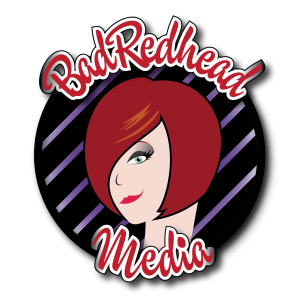This Is How To Write A Blog Post People Read
Writing a blog post people will read isn’t rocket science, yet it does take some skill. As I work with writers new to blogging, many are stumped by how to go about blogging.
I was, too, when I first started blogging over ten years ago when I thought blogging was about sharing photos of my kids and writing silly stories about their antics. Nobody visited my blog at first except my mom. My, have things changed!
Look up how to structure a blog post on the ‘net and you’ll find mostly how to set up a blog or buy a domain (important, but not what we’re talking about here). Common questions writers ask me now are:
- How do I structure my post?
- What do I write about?
- There are millions of blogs out there already – why would anyone want to read what I have to say?
All valid concerns I’ll cover with you today. Let’s discuss.
How Do I Structure My Post?
There are numerous ways to go about writing your blog post, and numerous types of posts, yet all good blog posts follow the same basic structure (and if you read this post through from beginning to end – or any of my blog posts – you’ll see I follow this same formula):
- Headline
- Introduction
- Subheadings (usually three)
- Body
- Summary
- Call to Action
- Biography and Share buttons
Here are some tips to get you there:
Write a great headline. Not sure how? Visit the free CoSchedule Headline Analyzer. Read the terrific tips they have available as well on how to write amazing headlines (I don’t mean clickbait). Work with it until you get a score of 70 or above (aka, “green”). This post got a 77 on the title.
I prefer to write the headline first because then I know it will contain the keyword or key phrase I want to optimize the post for SEO (search engine optimization), which makes it easier when it comes to the overall optimization. You don’t have to do it this way, however. I wrote a little mini 99c book to help you learn how to optimize your blog posts if you want to pick it up.
Always only 99c
Introduction: Hook your reader. Make it clear at the beginning what you’re writing about. Most readers won’t read below the fold if you’ve buried the lede. Don’t bury the lede. Are you solving a problem? Providing value? Answering a burning question? State that clearly in the first sentence or two.
Outline your post. Writers who are unsure how to blog tend to write stream-of-consciousness style blogs, which will lose readers quickly.
Think of blogging as storytelling. Every good story needs a beginning (tell readers what you’re going to tell them), middle (tell readers), and an end (tell readers what you told them). What makes a great writer, however, is that we show them.
You know exactly what you need to fill in by outlining your post. A good rule to remember is the Rule of Three: three sub-headings to review your main theme. For example, say you’re writing How To Make the Perfect Chocolate Chip Cookie. Your three subheadings could be three variations on the cookie: Dark Chocolate, Milk Chocolate, and Bittersweet Chocolate.
If you’re still unsure of how to create a blog post outline, I love this article by CoSchedule on how to format a basic outline.
Fill in your post. Now that you know how your post is laid out, you can do a little research. Find some great recipes to link to and always give attribution! Link to your own previous blog posts if they’re relevant.
Take your time here. There is no need to try to dash this out in twenty minutes. Well-written posts will always fare better than poorly written posts. Spell-check it. Use Grammarly (they have a free option) for grammar check. Tip: read it aloud to your pet or even your wall before you publish. You will always find a mistake to fix.
Call-To-Action (CTA): Be sure you remember to add a call to action (CTA) at the end. You don’t need to knock people over the head with this one. If you want people to sign up for your newsletter, add that. If you want them to leave a comment or share their experiences, put that. For many new writers, they tend to want to put one thousand CTAs. I don’t recommend that. Breathe. It’s just one blog post. Establish your blog readership first before you add twenty-five CTAs.
Use royalty-free photos only. Just because you found a photo on Google or Bing does not mean it’s free to use. Photographers can and will sue you. Instead, I recommend using free, awesome royalty-free sites like Unsplash (my absolute favorite), Pixabay, or Pexels. These all have terrific photos you can use in any way you wish.
Biography and Social Media Share buttons: Often overlooked, this is important to have and is typically a plug-in. If you’re unsure what to do, talk with your web admin or Google it. Share buttons are different than ‘follow’ buttons. Have both.
What Do I Write About?
Decide on your topics. Before you even begin writing your blog posts, you need to know what you’re going to write about. This is where most writers get stuck because this is connected to your author branding which is the foundation of your entire platform.
So, first things first — ask yourself these questions and write down your answers:
- What am I good at?
- What do I want to be good at?
- What am I passionate about?
- What am I interested in?
- What’s interesting about me?
Now, consider this list and move on to the next point, which is…
Create an editorial calendar. This doesn’t have to be fancy! I personally use Google Calendar because it’s easy and free. I also keep a journal handy to write down ideas as they come up. The most important thing is to get topics out of your head and onto a calendar so you can plan.
Next, take each of these topics and plan out your calendar for the next three to six months–not too much of a commitment, but enough to keep you committed. (I recommend blogging at least twice per month to keep the search engines happy. More if you can swing it.)
I also add a day to outline, a day to write, a day to optimize, and a day to publish. However you plan it, just do it.
There are many different ways to blog. If you’re new to blogging or tired of your same old format, here’s a great article from Buffer of different types of content formats (you can apply them to blogging).
The biggest mistake I see new writers make is blogging about writing. Unless your books are geared to writers (as mine are), don’t do it. Write what you’re passionate about and interested in beyond writing. If your blog is nothing but promotional giveaways or writing about your writing process, readers will quickly tune out. Which leads me to my next point.
Research your demographic. Who’s reading your blog posts? Who are you connecting with on social media? Where’s your site traffic coming from? Depending on your blogging platform, you can use a plug-in like Monster Insights or Google Analytics to find this information out.
Many writers refuse to blog because they only want to write books. As both a writer myself and business owner, I get that. However, here’s the issue: readers love to connect with authors and blogging allows for that. It’s also an excellent way to bring traffic to your website, which is a huge opportunity!
If you’re connecting with readers on social media only (think rented land), you’re missing out on a key opportunity to bring readers directly to you (land you own).
Why Would Anyone Want to Read What I Have to Say?
Sharing
This trips up many writers, particularly new writers. Look at my second point. We’ve all lived a lot of life, faced challenges, failed and conquered. There are universal truths people can relate to, and that’s what readers connect to. Sharing real-life experiences bonds us.
On my @RachelintheOC author blog and social media accounts, I write about real life. I share openly about being a childhood sexual abuse survivor, mental health, relationships, divorce, parenting as a single mom, and women and children’s issues. That’s my lived truth and my personal author brand. I write narrative nonfiction (Broken Pieces and Broken Places are out; I’m editing Broken People now).
Storytelling
While we are all unique as individuals and our lives are all different, we as humans connect over experiences, interests, and emotions. That’s where storytelling comes in. We are writers – blogging is a form of storytelling. Blogging also brings traffic to your site, which is important not only for growing your SEO but also for your author platform and building relationships with readers.
Discipline
Maintaining a blog requires writing discipline.
Writing regularly is a skill you develop, and it will make you a better writer. I challenge anyone who says it doesn’t. How?
These are twenty-first-century skills, and you can learn them. If you can be on Facebook, Twitter, or Instagram talking about politics or cats, you can invest that time in yourself and start blogging.
Have thoughts or experiences? Did I miss something? Share below!
The BRHM Mailing List
Sign up for the BadRedhead Media newsletter and receive 10 Blogging Basics For Every Author!




Nailed it, Rachel. Nailed it.
Thanks for the great tips, Rachel. Your writing is so clear, concise and easy to put into action!
This post really helped me to nail down a standard template to use for my own blog posts. Thanks so much for sharing your wealth of knowledge and the fruits of your experience!
This is a really excellent structure. I’ve been working on improving my blog workflow, definitely some helpful tips here!
Great job, Rachel.
The quality of the blog content plays an important role to attract more readers.
So, a person should be aware of the factors which should be taken into consideration to make the blog post more attractive.
Quality of the content is one of the top three ranking factors Google uses to rank a website.
Besides, there are more than 200 different ranking factors used in the Google algorithm to rank a website. So, a person should do some research in this regard before publishing a blog post.